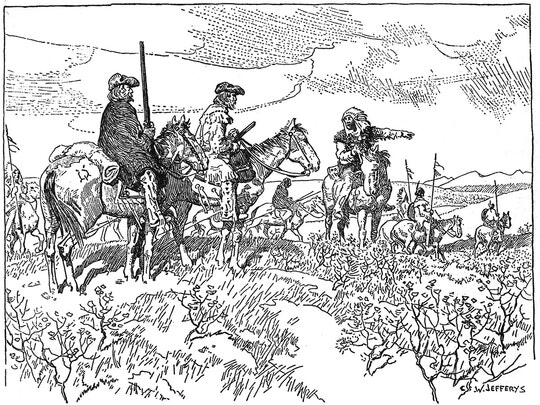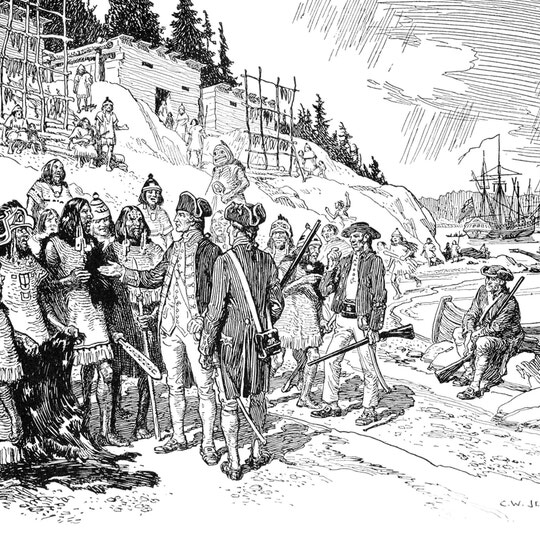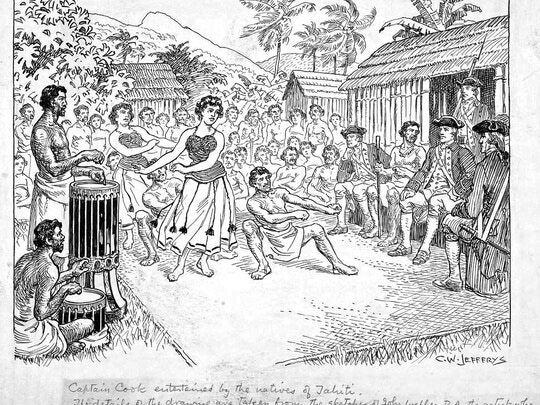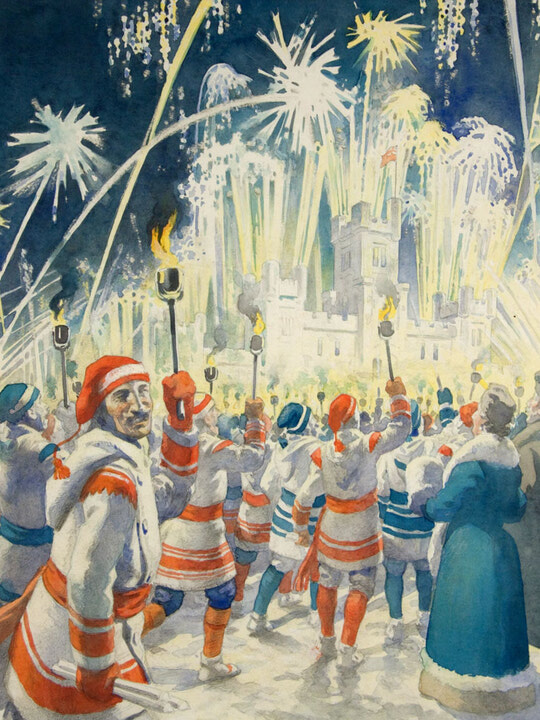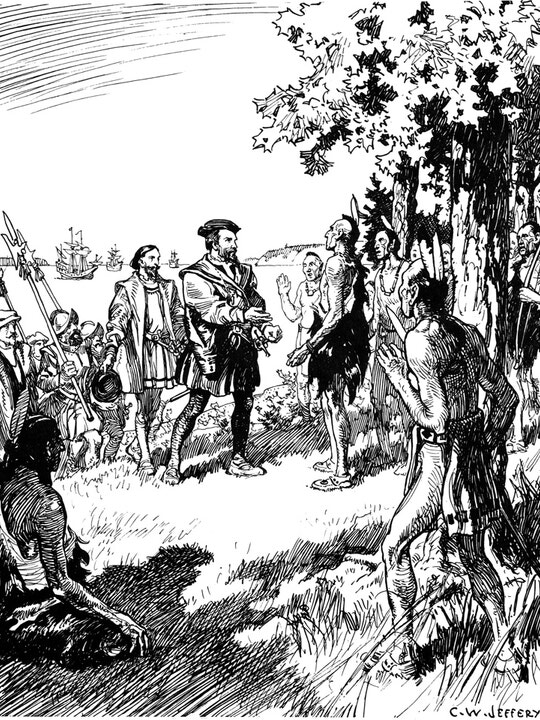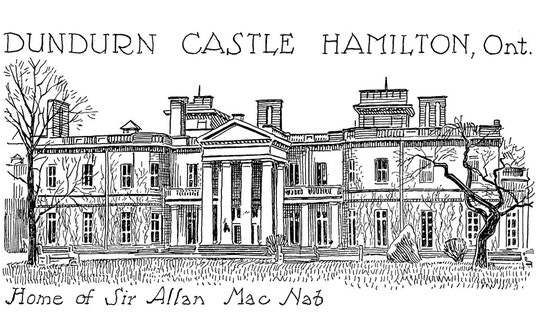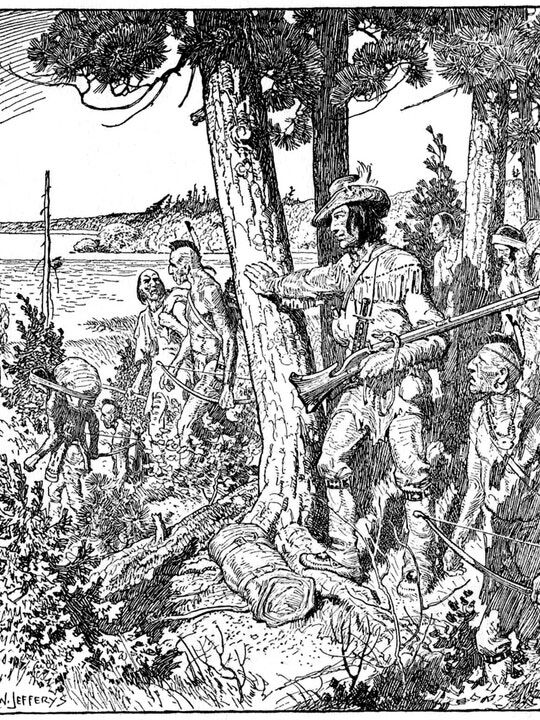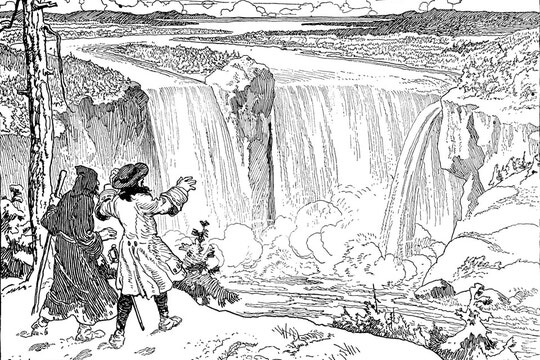Browse the Catalogue
The picture shows Brock watching the landing of the troops on the Detroit shore. He holds a field-glass in his hand. Behind him stands his aide-de-camp, Col. Macdonnell.
The first attempt at invasion by the Americans had failed at Detroit. Along the Niagara River gathered another American army. The summer passed into fall without an attack; but every week brought more troops and greater preparations by the enemy.
On New Year's Day, 1743, the snowclad tops of distant mountains came in sight to the west. For eight days the war party journeyed toward the mountains.
Many men had dreamed of a way to the Orient by a western voyage. Among them was another native of Genoa, Giovanni Cabotto, or John Cabot,* as later he came to be called.
In the narrative of Captain Cook's last voyage will be found detailed descriptions of the West Coast Indians, their houses, clothing, tools, etc., as they were in 1778.
Quebec City's winter carnival, which began in 1894. The carnival draws from the winter celebrations of New France.
Throughout the early years of the 16th century hundreds of fishing vessels flocked from the western ports of England, France and Spain to Newfoundland and the Gulf of St. Lawrence. Foremost among these hardy and semi-piratical sea rovers...
The picture shows Champlain standing on the deck of one of the departing English vessels, gazing at the rock of Quebec where the English flag now flew over the settlement he had founded...
The picture shows Champlain looking out over the lake to the west, from one of the many islands that fringe the shore of Georgian Bay, while one of his Huron guides points out the course to him.
In 1613 Champlain made a journey up the Ottawa River, at that time unknown to the white man. Like all early explorers, Champlain hoped that it led to the sea - that sea which stretched to the Far East of Asia.
It was Champlain's great desire to explore the country whence came the great river on whose banks he had planted the settlement of Quebec, and to search for a passage which would lead to the Western Sea.
All along the shores of the Gulf and the River St. Lawrence, during the later years of the 16th century and the first half of the 17th century, a brisk trade was carried on with the Indians for furs.
Thompson is using an artificial horizon. This is a flat iron pan into which mercury was poured. The pan is covered by a sloping glass roof, and placed on perfectly level and firm ground or rock in a situation to reflect the image of the sun.
Etienne Brule probably was the first white man to see Lake Ontario. Little is known about him, for he left no record of his own; but from scanty and scattered references...
On the 6th of December, 1678, a little party of Frenchmen was toiling through the snow-clad forest that crowned the cliffs of the Niagara gorge. Far below, the tossing rapids raced towards the whirlpool around which the travellers had circled.



